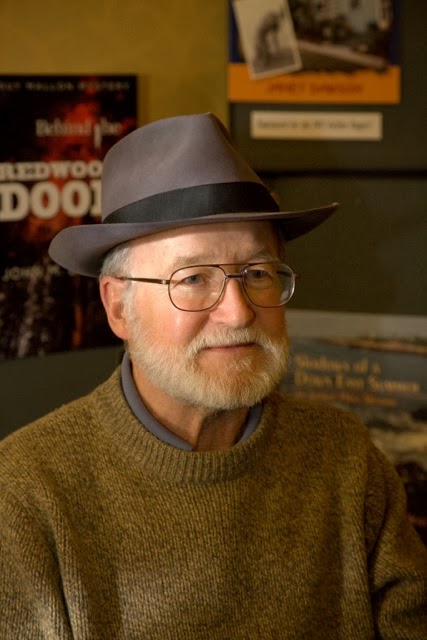As usual, I’ve read a lot of books this year. Some good,
some not so good, but all valuable in their own way. Emulating many others who
post their favorite reads of the year, I’m going to give you here my own list
of 10 you might want to add to your to-be-read shelf. They are, in no
particular order:
Brass In Pocket by
Stephen Puleston, the first in his Detective Inspector Drake series. Puleston
has created a complex, yet very human character. Afflicted with
Obsession-Compulsive Disorder, Drake is driven to find answers despite
pressures of job and family. He solves Sodoku puzzles to help him focus and
gain control. The recounting of his rituals may annoy some readers but it also
illustrates the difficulty under which he functions. http://www.amazon.com/Brass-Pocket-Inspector-Drake-1-ebook/dp/B00F8HVIRO/ref=asap_B00F8HJMUY?ie=UTF8
Nothing Save The Bones
Inside Her by Clayton Lindemuth. Set in western Pennsylvania in the 1950s, Emeline Margulies
proves to be a brave woman, capable of enduring more than expected in this
gritty novel with characters reminiscent of Faulkner. This is not a work for
those offended by violence and harsh language. But if you’re willing to look
beyond those obstacles you’ll find it an engrossing and memorable story. http://www.amazon.com/Nothing-Save-Bones-Inside-Her-ebook/dp/B00H9UQH6U/ref=cm_cr-mr-img
In Search of
Hemingway’s Meadow by Jeff Day. Okay, it’s about fishing. But it’s much
more than that. Day discusses fishing and, particularly, the art of fly
fishing. He also offers much more in this series of essays connected by his
thoughts and adventures while following in Hemingway’s footsteps along the Fox River . http://www.amazon.com/In-Search-Hemingways-Meadow-Two-Hearted-ebook/dp/B00E2C1NFI/ref=cm_cr-mr-img
The Orenda by
Joseph Boyden. A Jesuit priest is caught up in the conflict between the Huron
and the Iroquois in the 17th century. Highly recommended. http://www.amazon.com/The-Orenda-novel-Joseph-Boyden/dp/0385350732/ref=cm_cr-mr-img
Voyage of Strangers
by Liz Zelvin. An admirable work of historical fiction about a young Jew who
accompanies Columbus on his voyage to the New World . http://www.amazon.com/Voyage-Strangers-Elizabeth-Zelvin-ebook/dp/B00JEOZE3G/ref=sr_1_1?s=books&ie=UTF8&qid=1419967784&sr=1-1&keywords=liz+zelvin
Trail Justice by
Wayne D. Dundee. This is one of a number of Western novelettes Dundee produced this year—all of them worth your time. Elwood
Blake, a former mountain man, and Basil
St. Iron, a young scout, team up to protect
pioneers on an Oregon-bound wagon train. http://www.amazon.com/Trail-Justice-Westward-Tide-Book-ebook/dp/B00MF8S4VW/ref=cm_cr-mr-title
Desperate Deeds by
Patricia Gligor. This is the third in Gligor’s Malone mystery series. While
working one job and trying to start a decorating business, Ann Kern worries
about her husband, an alcoholic who recently lost his job and his mother; frets
about her children and is concerned about a depressed neighbor. Then things get
worse as her six-year-old son goes missing. http://www.amazon.com/Desperate-Deeds-Malone-Mystery-Book-ebook/dp/B00JARB2DS/ref=cm_cr-mr-title
Samuel The Pioneer
by Douglas Quinn. This is the second in Quinn’s historical adventure series
based on figures in his line of descent. While building his own life and
seeking to learn the fate of his sister taken captive by the Indians years
earlier, Samuel must also cope with the legacy of an embittered drunkard
father. http://www.amazon.com/Samuel-The-Pioneer-Douglas-Quinn/dp/1499145217/ref=cm_cr-mr-title
Guns Of The Texas
Ranger by Dac Crossley. Texas Ranger Ignacio “Nacho” Ybarra crosses the
border into Mexico
in search of a straying son-in-law and finds a heap of trouble. http://www.amazon.com/dp/1610091108/ref=pdp_new_dp_review
The Clever Mill Horse
by Jodi Lew-Smith. The first of a projected series about Ella Kenyon, a
strong-willed young woman, struggling against harsh odds and devious men to
fulfill a promise to her grandfather. http://www.amazon.com/Clever-Mill-Horse-Jodi-Lew-Smith/dp/0991341201/ref=cm_cr-mr-title








.jpg)





